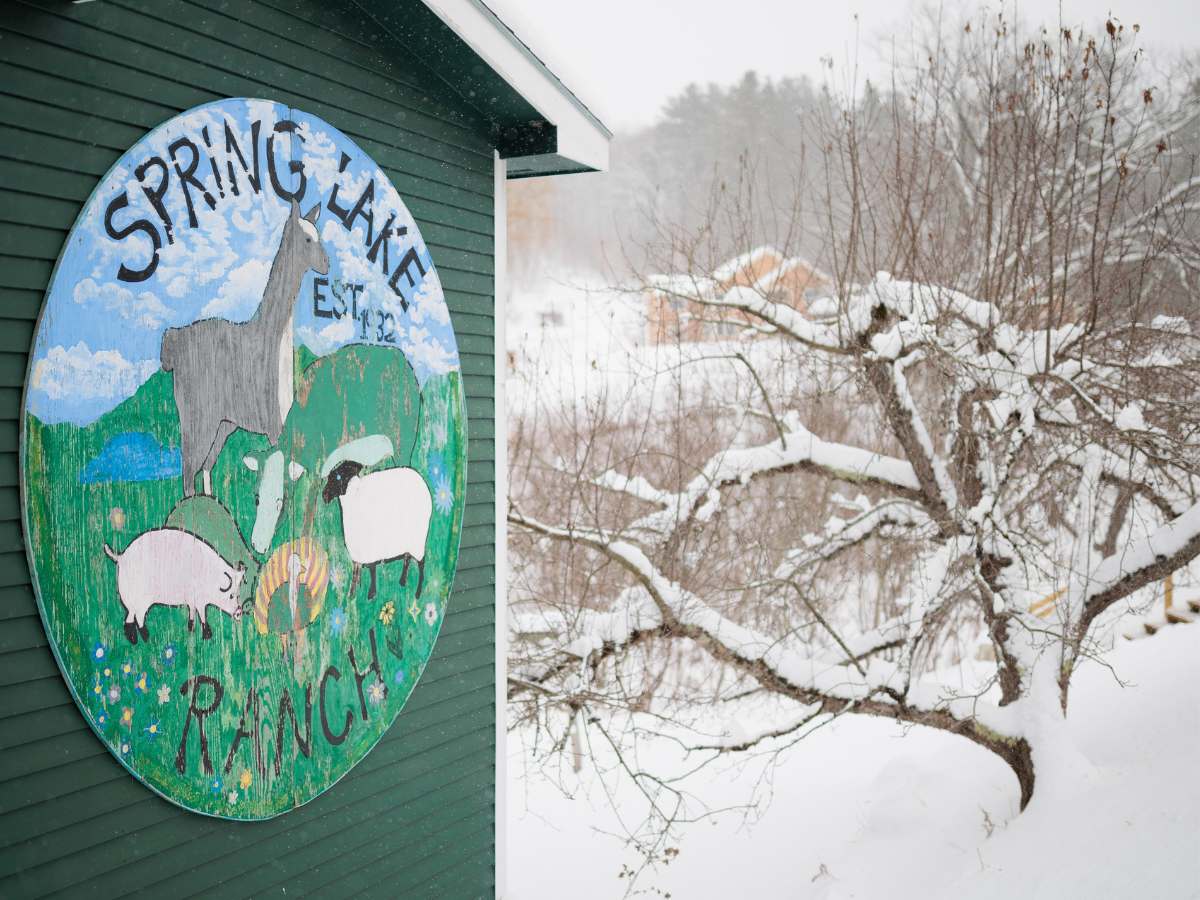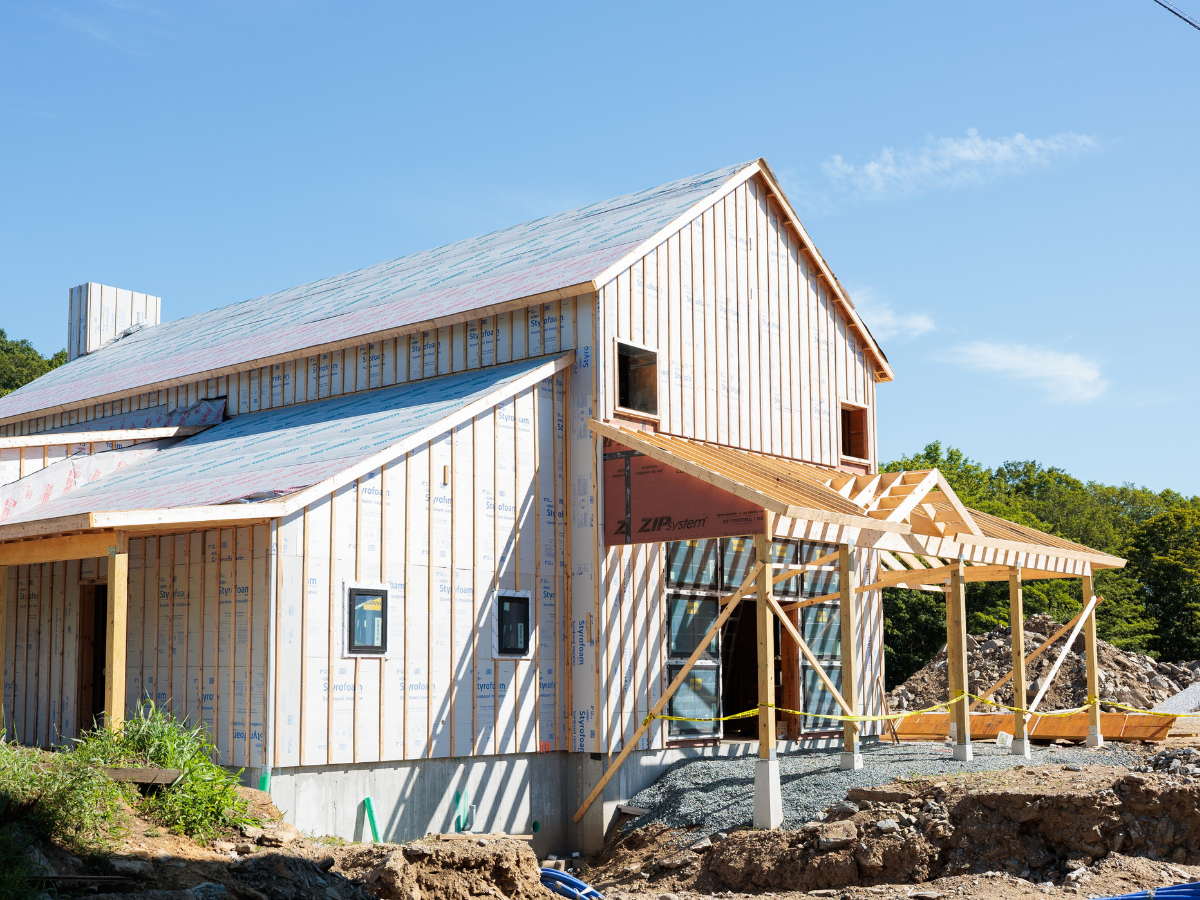
It’s a familiar story for Vermonters: A loved one experiencing a mental health crisis goes to the hospital. They spend a few days in a psychiatric unit, or two weeks at one of the few drug and alcohol rehabilitation facilities in the state, and then they’re sent home. All the stressors, patterns, people, and pathways that originally led them to crisis are still there, and they relapse.
Relationships are damaged and resources are strained. In some cases, hospital and rehab stays are replaced by prison sentences, which exacerbate the difficulties of reintegrating in a safe and healthy way. Relapse. Crisis. Each time the cycle repeats, it fuels a sense of hopelessness that makes long-term recovery from mental health challenges feel that much harder.
At Spring Lake Ranch Therapeutic Community (SLR) in Shrewsbury, VT, an expanded step-down program seeks to bolster residents’ long-term success. SLR hopes the program can become a model for others across the country.

The Banks Transitional Living Program (TLP) at Spring Lake Ranch is a micro-neighborhood currently being constructed on the Ranch’s 700+ acre, mountain-top property where their primary mental health facilities have existed for nearly 100 years. Within three new apartment buildings and a community center, residents will receive customized support to bridge the gap between residential care and independent living.
“This is something we’ve been wanting to do for a long time,” says Rachel Stark, Executive Director of the Ranch. “We hope this will be the missing link for people who are ready for new challenges, but not quite ready to be fully on their own.”
Clients come to SLR from all over, often from intensive inpatient and rehab facilities. Common diagnoses include depression, anxiety, schizophrenia, and bipolar disorder. Some residents are simply having trouble making life transitions or experiencing “failure to launch” syndrome. About 80% have dual diagnosis, which means they are experiencing both mental health and substance use challenges.
Residents participate in a farm-based therapeutic work program while receiving clinical care within a supportive community. The typical stay is 6-8 months, but timelines are individual. After that, residents currently have the option of transitioning to Elliot Program, a 6-bedroom pilot of the Banks TLP, where they can have a car, manage their own medication, go to school, or work off-site. Last year, roughly a quarter of SLR residents chose Elliot Program before discharge.
“We did a market study, we did a feasibility study,” says Stark. “But more than that, we talked to families. We talked to residents. This is what people were looking for.”

The 12-bed Banks TLP will offer apartments and suites, depending on resident preference. The rooms have been designed with care, full of light and each with its own balcony overlooking green pastures and lush forest. The community center will be a gathering place for residents, staff, and families, with a large kitchen and offices.
Residents and their families will choose between a variety of service packages. All will receive continued clinical support and coaching with trusted providers, accountability in recovery, vocational counseling, and help in further developing their independent living skills. They can also choose add-on services like physical wellness, family wellness, and transportation assistance.
Additionally, residents who’ve been in the Banks TLP for at least a year can participate in the Pathways to Activities, Socializing, & Support (PASS) program, providing continued assistance once they move off-site.
The Ranch wants to help residents succeed by strengthening the full continuum of care. Mental wellness and recovery are lifelong goals, and by giving residents more time and specialized focus on skill-building and independent living, SLR believes they will be better equipped to escape the cycle of relapse and crisis.
This level of care comes with a financial cost, which insurance does not currently cover. SLR designed the Banks TLP as a package model so that families could choose the most feasible plan with service add-ons. Residents are also encouraged to apply for financial aid.
Currently, 30-40% of residents receive financial aid for the primary therapeutic work program, covering up to 80% of costs. Earlier this year, the Ranch announced their goal of doubling the amount of aid distributed to residents by 2030. This aid is funded by donors, as well as by sales of Ranch-made products like maple syrup, woven goods, and granola.

“When somebody is right for this program, we do what we can to get them here,” says Kevin Molloy, Director of Operations and Admissions, himself a former resident. “It may feel out of reach, but the support is there to make it happen. This model of care works, I’m living proof of that. So, we want to make it accessible to as many people as possible.”
In 2024, SLR launched a three-year, $18 million Capital Campaign to fund the Banks TLP as well as other updates necessary to support the expansion. With one year left in the campaign, they’re looking to raise the final three million.
Development and Communications Director Rose McCracken is working hard to hit that goal.
“The early support was really amazing. People who’ve been to the Ranch or who’ve had a loved one here know how powerful the program is and they want to see it grow. What we need now is help from folks who may not have heard of us but are passionate about mental health care.”
Investing in mental health benefits us all, McCracken says. “These are not just our family members and friends. They are our future neighbors, coworkers, and community leaders. When we give them the tools to thrive, it enriches life for all of us.”
The Banks Transitional Living Program at Spring Lake Ranch will begin accepting residents in 2026. For more information, visit springlakeranch.org/bankstlp. Donations to the Capital Campaign can be made online at springlakeranch.org/capitalcampaign or by emailing Rose McCracken at rosem@springlakeranch.org.
